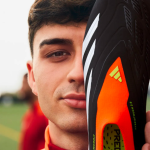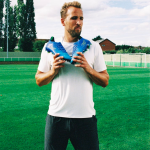
Can football boots prevent injuries?
The latest frontier of technology
November 29th, 2023
How do we choose which model of football boots to buy? There are mainly two criteria, focusing on aesthetics and comfort, which in some cases even coincide. Many footballers are closely tied to the past, choosing not to "surrender" to new technologies, preferring boots that were released on the market ten or twenty years ago. This is a discussion that not only concerns those who play football at an amateur or amateur level. Toni Kroos has been playing with the Adidas 11pro Adipure model since 2014, to the extent that over the years, Adidas has adapted it to his requests: some purely aesthetic, such as adding the German flag on the heel, and others aimed at improving performance on the field, such as hybridization with the soleplate of the Adidas Copa Pure. This demonstrates that, despite major sportswear brands continuing to experiment with the best uppers—lightweight, breathable, with grip, or any other type of feature—some prioritize an emotional connection with a particular footwear.
Injuries
It is not common, however, to consider a very important aspect at the time of purchase: the prevention of injuries. The start of this season has not been pleasant in this regard, with fans and managers angry with a calendar with no regards of player's fatigue. Neymar Jr., Gavi, Buendia, Mings, Timber, and Fofana are dealing with anterior cruciate ligament rupture, one of the most uncomfortable and feared injuries. The data regarding injuries in the Premier League is also worrisome. Since the beginning of the season, there have been 196, a figure that shows a 15% increase compared to the August-November period of the past four seasons. And it doesn't end there. The Telegraph reports that severe injuries, such as anterior cruciate ligament rupture, are even more frequent in women's football. Women are indeed six times more prone to this type of injury than men, considering those sustained in situations without physical contact with the opponent. So, what do football boots have to do with this? How can they help solve this problem?
Knox Chate's Intuition
There are no boots yet capable of preventing injuries like anterior cruciate ligament rupture, and yet Knox Chate is trying to tackle this challenge. Knox Chate wants to create anti-grip studs, cleats that do not embed into the ground, thus significantly reducing bone injuries. The studs work very simply: they are characterized at the tip by a movable sphere, which provides greater mobility to the player's leg at the moment of impact between the soleplate and the grass. Anti-grip studs are designed to especially facilitate changes of direction, recurring movements in football as well as in other sports played on grass. It is clear that, in Knox Chate's mind, not all studs on the soleplate would be movable to avoid making the fit very unstable for the athlete. The studs with the sphere would be only three: one positioned under the big toe, and two under the heel, the two parts of the foot that exert greater traction on the football field. In an interview with The Telegraph, Chate stated: "It's not a cure [for serious injuries]. It's like a seatbelt. It reduces the risk of getting injured. That's the goal."
Anti-Grip Studs in Rugby
The model has, for the moment, been designed only for synthetic fields and has not yet yielded good results on natural grass. However, future prospects remain optimistic, especially because they could be an excellent resource for many other sports. At the University of Stirling, they have already conducted tests on amateur rugby players, who were able to perform some movements such as changing direction more agilely and quickly. In this case as well, however, it has not been possible to collect any data regarding the injury reduction capacity.
It is difficult to know whether Knox Chate's idea can one day become a reality and at the same time to judge the actual benefit of his project. If this sole plate is really useful in limiting injuries, even if it only reduces them to a small extent, it should be used to protect the health of athletes through technical innovation. At the same time, the football equipment market - like sports in general - is in full swing, releasing new types of tops, laces, special editions, reissues and more. This is exactly why he can pay more attention to an issue as important as injuries.



















